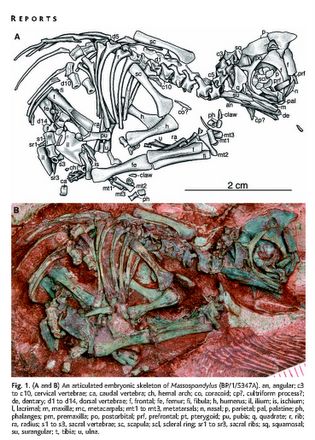
The exceptional growth series of Massospondylus was analyzed from embryo to adult using articulated skeletons. Body proportions of the embryos indicate that the hatchlings were born four-legged (quadruped). As the animal matured, the neck grew faster than the rest of the body but the forelimb and head grew more slowly. The end result was a two-legged animal that looked very different from the four-legged embryo.
The researchers suggest that the later four-legged gait of the giant sauropods may have evolved through a developmental phenomenon called paedomorphosis, the retention of juvenile features in the adult, and may have preceded their giant size. In addition, the embryonic skeletons lack teeth, leading the researchers to hypothesize that the young may have required parental care.
Read the story at National Geographic News by clicking HERE.
Read the UT press release HERE